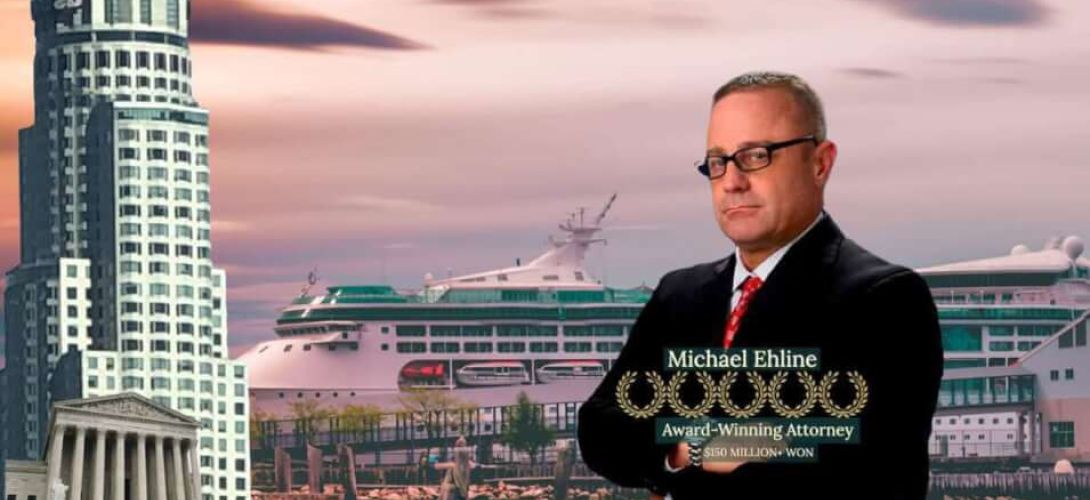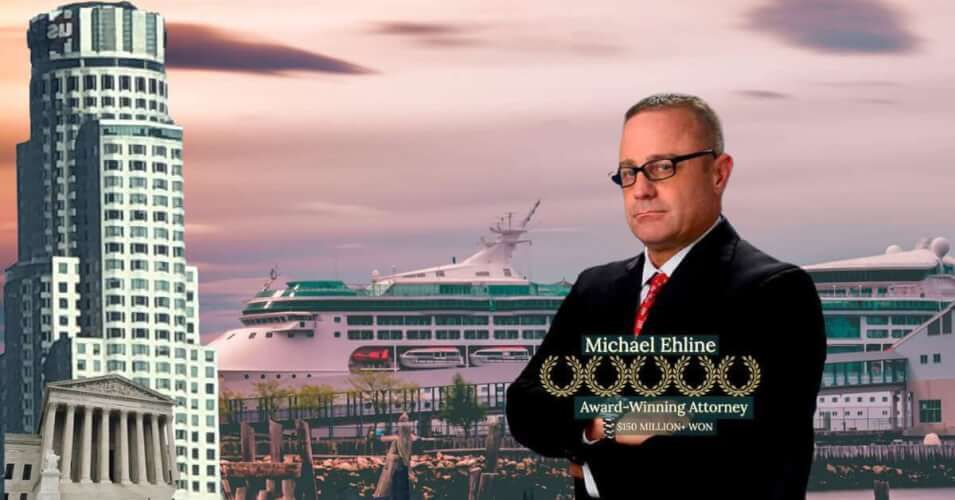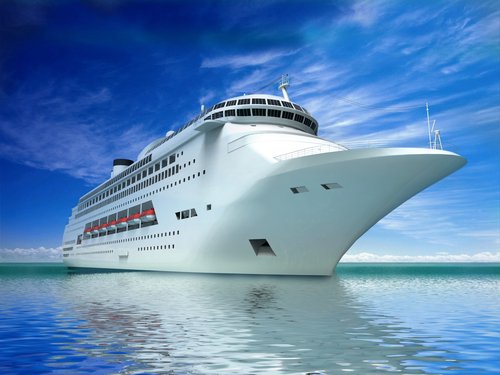
Are MOB’s Preventable?

Are MOB’s Preventable?
As some of our readers know, I just returned from Washington, D.C., lobbying Congress to force the cruise lines to abide by existing law. What do I mean? Well, existing law requires cruise lines doing business in the U.S. to have a man overboard or “M.O.B.” system to warn and prevent M.O.B.s and their tragic aftermaths. So first, when I saw this story on the news the other day, I was floored.
What is An M.O.B.?
M.O.B. is the acronym for “Man Overboard!” It has historical roots that are probably as old as travel at sea. So what does it mean, and why does it matter? It means someone (usually a crew member), while aboard a vessel at sea (historically a male), has fallen overboard off the side of the boat or seagoing craft. The idea is to alert the ship’s captain and another crewman that a comrade has fallen into the water.
Because of each crew member’s necessity in the ship’s function and the camaraderie, it remained vital to save the fallen crewman. But in time, sea, lake, and river travel became a commercial enterprise for non-crew members. So whenever anyone falls overboard, the custom is to shout, “Man overboard!” This call will be repeated by all hands hearing it, passing the warning along. Afterward, the captain must perform a “full stop” and circle the vessel to the first alert location. Also, assuming the crew can see the person, the helmsman must point his finger toward this fallen individual until a passenger or crewmember tosses a life preserver or rope for sea rescue.
What Is The Latest Reported Man Overboard Case?
The F.B.I. is now investigating a senior woman’s death aboard a cruise ship en route to San Diego. The woman boarded a Holland America cruise ship in San Francisco with other passengers for a seven-day Mexico cruise. The vessel has been identified as the MSVeendam, though authorities have not released the senior woman’s identity.
According to officials, approximately 2,000 passengers and crew members were aboard the M.S. Veendam when the woman went overboard. Many of the passengers were celebrating the New Year. One passenger, Patricia English, said that she knew something was seriously wrong when she could hear the ship stopping and turning about at sea. She said she also listened to a loud alarm and saw a bright flare.
Gary Schmidt, another passenger, said that he heard an announcement. And that proclamation had shocked him after the captain of the ship said:
“man overboard, crew members go to your stations.”
- According to English, there were other announcements, including one that told passengers to move away from the lifeboats.
The M.O.B. Alarm.
Someone raised the Man Overboard Alarm because the captain was setting divers and smaller vessels into the sea to locate a woman who had fallen overboard. According to Schmidt, the captain said, “return to your cabins.” The captain barked his headcount order for purposes after the senior fell overboard; the ship laid 300 miles southwest of San Diego.
Another passenger saw the 88-year-old Canadian woman enter her cabin’s balcony, leaning over its protective rail. The passenger-witness wished to remain unidentified. But she wanted people to know the truth after hearing the San Diego Medical Examiner ruled the 88-year-old woman’s death a suicide.
But the witness passenger said the woman had leaned over the rail to jump, but then she turned around to go back inside. Except she suddenly slipped and fell from the balcony. So I am not concerned with the medical examiner.
- The witness says that the woman quietly slipped when returning from the railing.
In any event, rescuers located the woman’s lifeless body, pulling her remains from the water, but they were too late to revive her. According to the passengers, the ship continued to San Diego for approximately two more hours. According to Holland America officials, they assist the 88-year-old Canadian woman’s family during this challenging time.
We presume no warning system was active, as no report mentions M.O.B. systems. With no M.O.B. system, hopefully, a witness will alert the ship’s crew. Next, the ship’s captain performs a complete stop, seeking a sea rescue. But an early warning M.O.B. system will shave off precious minutes from this procedure and was already required by law.
Why Don’t Cruise Lines Have M.O.B.s Installed When the Law Says They Must?
Great question. Based on our research, the cruise lines believe that the technology does not exist or is “tested,” whatever that means. Below are their quotes. We will let you decide if they are being honest or not.
The Cruise Vessel Security and Safety Act mandate cruise vessel technology installation to capture images detecting passengers falling overboard, so long as such technology is available. The technology is available, and Congress passed the law years ago, yet cruise lines never installed M.O.B. systems.
“I don’t think the technology exists,” Maltzman says. “ There are exterior cameras on ships that sometimes document people jumping overboard or falling overboard. I think it is going to be difficult to have an electronic device that’s going to figure out every time that happens and not be triggered when a seagull flies by the detector or a large wave splashes up the side of the ship.” [Emphasis.] (Source ABA Journal.)
As noted above, cruise ship industry defense attorney Maltzman says he does not even know if the technology exists. Let’s put this in perspective. Congress passed the law requiring M.O.B. safety systems in 2010, which is now 2021, and there is still no M.O.B. system in place on most cruise ships that do business in the U.S.A. And once again, in a prestigious A.B.A. Journal article, Maltzman says, “I don’t think the technology exists.” But wait, there’s more to this tale.
Contrary to the Above Comments by a Prominent Cruise Industry Defense Attorney, At Least One Major Cruise Industry Advocacy Group ADMITS that M.O.B. Technology Exists, But They Are “Conducting Trials.”
In an excellent article located here:
The Cruise Lines International Association said in a statement, “..the industry continues to evaluate, test and conduct trials…” to figure out which one works best at sea. [Emphasis.]
Rather than try and figure out who is telling the truth, let’s look at what readily available public information says regarding the availability of Man Overboard Detection Systems in the U.S. for large vessels. A little clue first. Technology has existed for a long time.
The Inventor of the Man Overboard Detection System Says The Technology Has Existed for Years, Already Used On Many Vessels
This information will probably blow your mind. But all the above statements [most people might call these lies] by vaunted cruise industry representatives are blown out of the water (excuse the pun) by a former Coast Guard engineer’s lovely comments.
…former Coast Guard Engineer Dave Leone said, the technology has been around for years. He developed it. “This is instant, the moment it senses mass coming down it sets off the alarm instantly,” said Leone. Leone said each one of the overboard sensors he developed in 2010 is equipped with two lasers and sets off an alarm when someone falls into the water. “I’m baffled by it,” [referring to the excuses made by the industry as to why it is not in place] said Leone. [Emphasis.] (Source.)
Vote With Your Feet?
You can vote with your feet if you are in the same disbelief as me. The Ehline Law Firm represents and advocates on behalf of cruise victims, and we want to shout out to Eric Rappe and Kendall Carver for their steadfast commitment to fighting for the rights of the oppressed and voiceless cruise victims.
In closing, I know that cruise lines can be doing more to prevent people from falling overboard. Cruise lines must install higher guard and balcony rails, including proper no-slip decks. Captains must take passenger ownership and stop plying them with unlimited, free-flowing alcohol.
Last, we can never forget how the cruise industry’s failures harm real people. The F.B.I.’s responsibilities include discovering that M.O.B. systems remain inactive. I wrote this piece in memory of Mr. Rappe and hoped we could place heat on these cruise ship scofflaws.
Sources:
Man Overboard Maritime Early Detection Systems (MEDSTM):
Categories
- A to Z Personal Injury Podcast
- Auto Accident Blog
- Brain Injury Blog
- Burn Injury Blog
- Civil Rights Blog
- Death Law Blog
- Dog Bite Blog
- Elder Nursing Abuse Blog
- Government Tort Blog
- Insurance Law Blog
- Piloting and Aviation Accident Blog
- Premises Liability Blog
- Products Defect Blog
- Recreation-Sports Accident Blog
- Reports
- Sea Admiralty Maritime Accidents
- Service Related Cancer Blog
- Sexual Assault Blog
- Spinal Cord Injury Blog
- Torts, Examples, Explanations
- Train Accidents Blog
- TV, Media & Firm News
- Uncategorized
Firm Archive
Main Los Angeles Location


Michael Ehline
Michael Ehline is an inactive U.S. Marine and world-famous legal historian. Michael helped draft the Cruise Ship Safety Act and has won some of U.S. history’s largest motorcycle accident settlements. Together with his legal team, Michael and the Ehline Law Firm collect damages on behalf of clients. We pride ourselves on being available to answer your most pressing and difficult questions 24/7. We are proud sponsors of the Paul Ehline Memorial Motorcycle Ride and a Service Disabled Veteran Operated Business. (SDVOB.) We are ready to fight.

